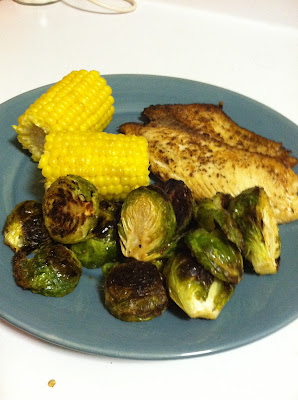The term “Limey,” an old slang nickname referring to
sailors, is believed to originate from the practice of giving lime juice to
British sailors to prevent scurvy.
In a sense, this was the first functional food claim. Although functional foods have no legal
meaning in the United States since it is a marketing phrase and not a
regulatory phrase, the American Dietetic Association (ADA) have defined it as
foods which provide additional health benefits which may help reduce disease
risk and/or promote optimal health.
What are the different types of functional foods? Functional foods can be broken up into
four categories: conventional foods, modified foods, medical foods, and foods
for special dietary use. Today I
will discuss conventional foods: the simplest form of functional foods. This category is composed of foods in
their original state such as fruits and vegetables. Some examples are garlic, nuts, tomatoes, and berries. These foods are rich in nutritional
components that may help boost the immune system and reduce the risk of cancer.
The color of your fruits and vegetables signify the nutrient you are consuming. The chart below exhibits some of the most common nutrients found in specific colors.
Color
|
Nutrients
|
Functions
|
Red
|
Lycopene
Ellagic
Acid
Quercetin
|
1.
Reduce the
risk of prostate cancer
2.
Lowers blood
pressure
3. Antioxidant (fights harmful free radicals)
|
Orange/Yellow
|
Beta-carotene
Lycopene
Potassium
Vitamin
C
Flavonoids
|
1.
Reduce the
risk of prostate cancer
2.
Reduce
age-related vision issues
3.
Lowers
cholesterol and blood pressure
4.
Antioxidant
5.
Promotes healthy
joints
|
Green
|
Chlorophyll
Fiber
Lutein
Folate
Vitamin
C
Beta-carotene
Zeaxanthin
|
1.
Reduce
cancer risks
2.
Lowers
cholesterol and blood pressure
3.
Help with
digestion
4.
Antioxidant
5. Boost immunity
|
Blue/Purple
|
Lutein
Zeaxanthin
Resveratrol
Vitamin
C
Fiber
Flavonoids
Ellagic
acid
Quercetin
|
1.
Support
retinal health
2.
Lowers
cholesterol
3.
Boost
immunity
4.
Help with
digestion
5.
Improve
mineral absorption
6.
Fight
inflammation
7. Reduce tumor growth
|
White
|
Beta-Glucans
EGCG
(antioxidant)
SDG(antioxidant)
Lignans
|
1.
Boost
immunity
2.
Reduce
cancer risks
3.
Balance
hormone levels
4. Antioxidant
|
By eating a variety of colors, you are guaranteed a diverse amount of essential vitamins and minerals. Try to eat a different color every day! Use the list below to get ideas of colorful produce to incorporate into your meals. Then, go to the supermarket and pick out 1 veggie or fruit from each color. Remember, don’t rule out frozen fruits and veggies (as long as there are no added ingredients). If you have kids, take them with you to help pick out the weekly colors. This can be a fun activity for kids and will help keep them interested in healthy foods.
Today, food is not just seen as a way to get carbohydrate, protein, and fats into the body. Rather, food is seen as a route to the best possible wellness. Consumers are constantly on the prowl for the next trend in nutritional health but it can become confusing to determine which foods will provide an additional physiological benefit beyond that of meeting basic nutritional needs. The research being done on functional foods is continuously expanding and it is a very exciting time to get on the functional food bandwagon!
Here are some pictures of colorful dishes my family and I have cooked recently:
 |
| Roast chicken with yellow squash and quinoa |
 |
| Shakshuka |
 |
| Pan-fried Tilapia with corn and roasted brussel sprouts |




MMMmmmmmmm.....makin' me HUNGRY!
ReplyDeleteThis came up in my health class on nutrition and I am printing to give it out to them. Thanks!!
ReplyDeleteMK, You teach a health class? That's so cool! Glad I can be of service.
Delete